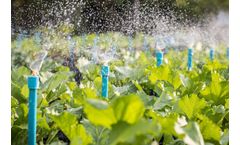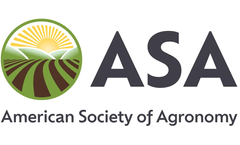Fertilizer Runoff Articles & Analysis
9 articles found
If you’re a passionate home gardener or just beginning to cultivate your vegetables, you’re probably looking for efficient ways to keep your plants healthy and thriving. One of the most effective ways to conserve water while guaranteeing your vegetables receive precisely what they require is by implementing drip irrigation systems for vegetable gardens. In this informative blog, we ...
· Nutrient levels: Monitoring key nutrients like nitrogen, phosphorus, and potassium empowers designers to tailor fertilization plans, promoting healthy plant growth without over-application. ...
ByJXCT
· Nutrient levels: Monitoring key nutrients like nitrogen, phosphorus, and potassium empowers designers to tailor fertilization plans, promoting healthy plant growth without over-application. ...
ByJXCT
Western Canada has a short growing season which makes another pass for top dressing fertilizer sometimes difficult to achieve. Many crops have the fertilizer applied during the seeding season with Liquid Distribution Systems, (like these kits we make here). Often this will meet the crops fertilizer requirements for the whole season. Making one pass makes sense in a season that brings the right ...
The discharge of reclaimed wastewater and watershed drainage will increase a lake’s phosphate level. Lawn and landscape fertilizer runoff are another major source of phosphate in lakes and their use should be avoided near the water. Nitrogen is a product of the natural metabolism of plant and animal matter, and fertilizer ...
It means growers can apply less nitrogen fertilizer to their fields.* Newton Lupwayi and his research team work with legumes and pulses in Alberta, Canada. ...
Phosphorus (P) is one of the limiting factors of eutrophication. P added to soil from fertilizer application could pose a threat to water quality. According to agricultural habits, swine manure (SM), oil cake (OC), biogas slurry (BS), commercial organic fertilizer (OF) and compound fertilizer (CF) were selected to compare their P losses on a ...
Between 1950 and 1988, fertilizer use climbed from 14 million to 144 million tons. This period of remarkable worldwide growth came to an end when fertilizer use in the former Soviet Union fell precipitously after heavy subsidies were removed in 1988 and fertilizer prices there moved to world market levels. ...
We developed new methods to predict annual dissolved P loss in runoff from surface-applied manures and fertilizers and validated the methods with data from 21 published field studies. We incorporated these manure and fertilizer P runoff loss methods into an annual, field-scale P loss quantification tool that estimates dissolved ...








